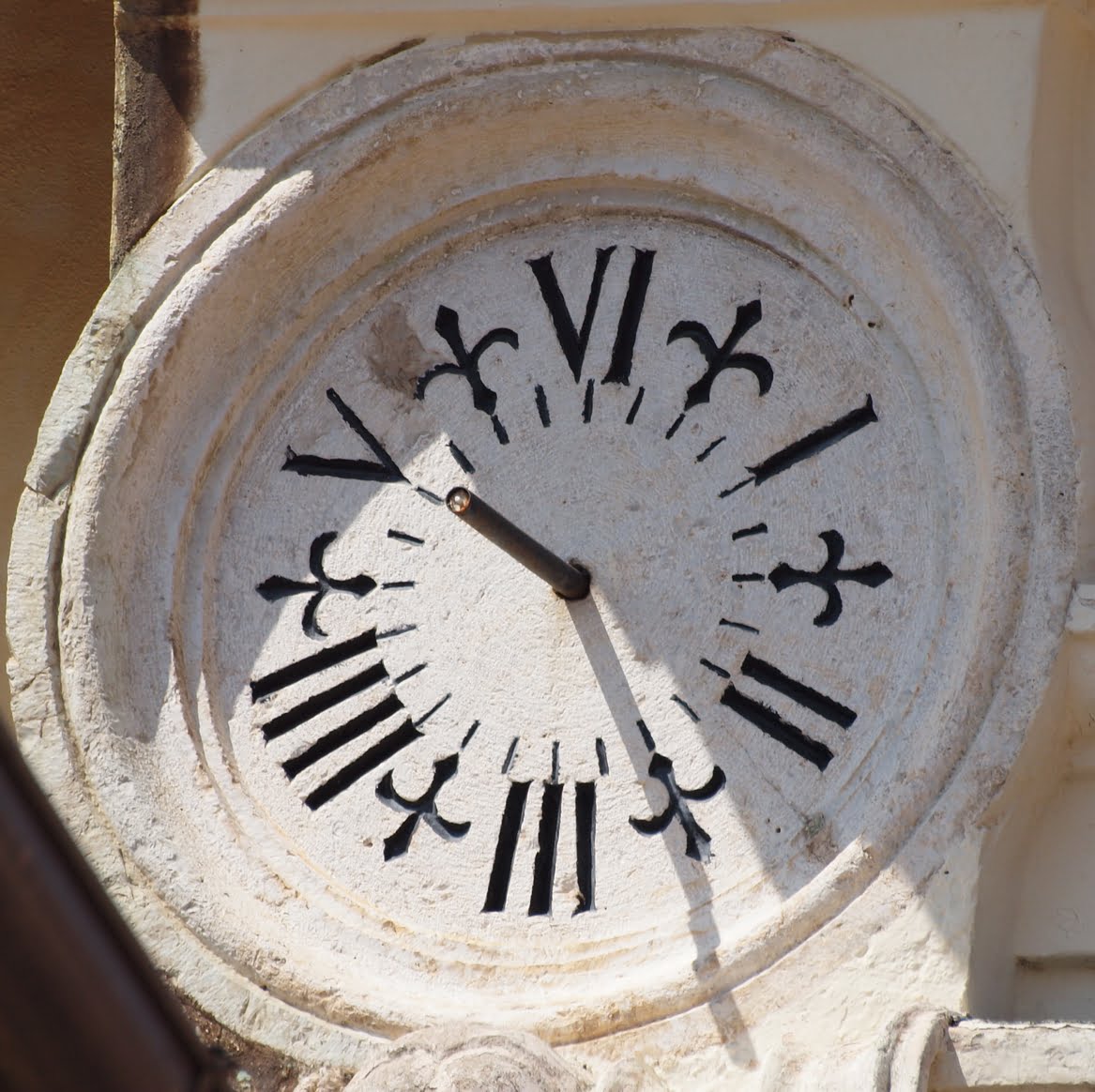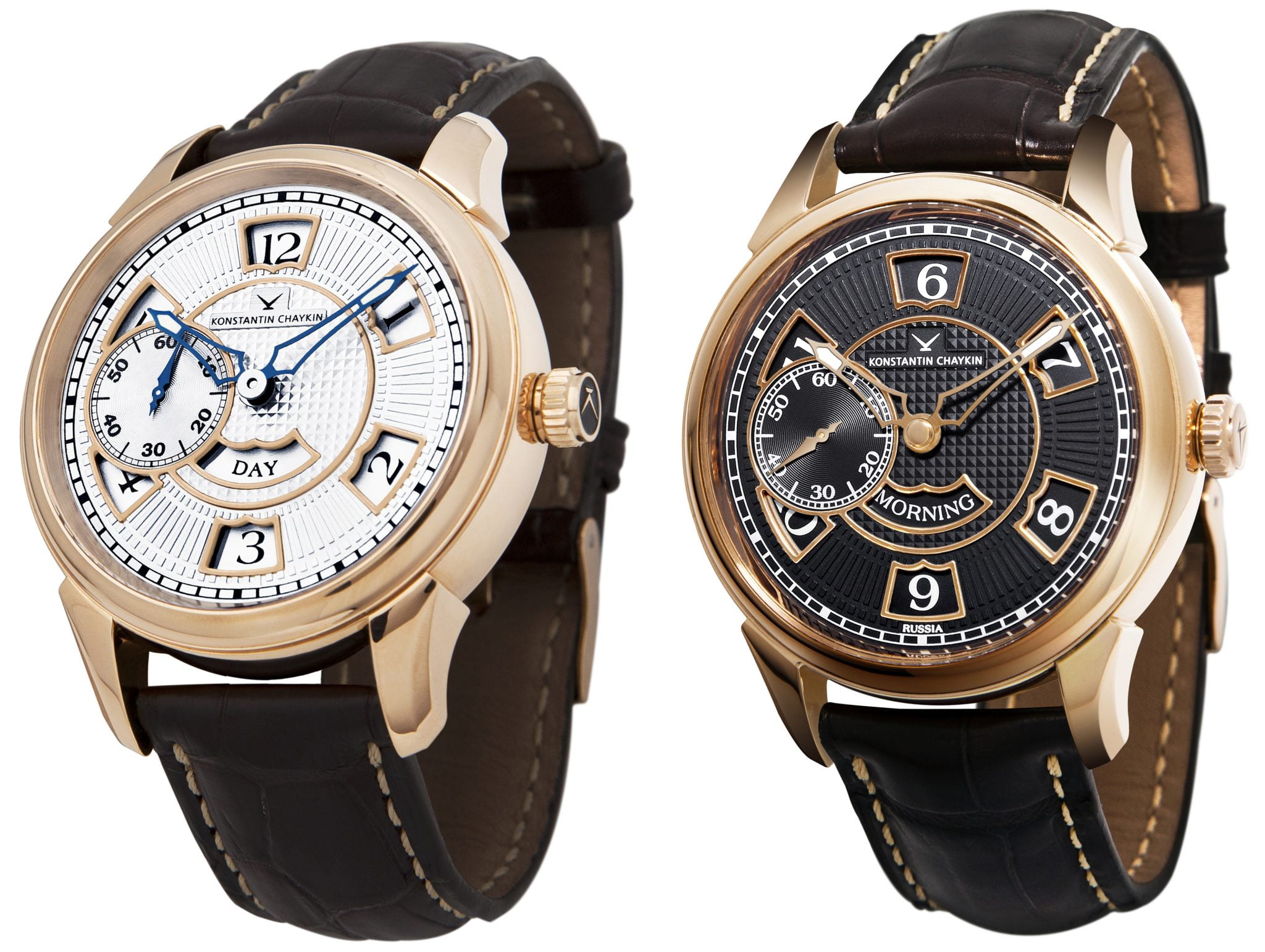На заре развития часового дела у мастеров в общем-то не было понимания, каким должен быть циферблат. Круглым – да, поскольку Солнце, мерило времени, с очевидностью для любого наблюдателя совершает по небосводу круговое движение. Следующий вопрос: сколько на циферблате должно быть обозначено единиц времени? Непонятно. Происходящий от древних шумеров (вполне возможно, что это было изобретено кем-то до них) обычай делить сутки на 24 часа был подхвачен древними вавилонянами и затем египтянами. Сутки считались состоящими из 12 дневных часов – от восхода до заката, и 12 ночных – от заката до восхода, и с тех пор 24-часовые сутки прижились. С нашей сегодняшней точки зрения подсчёт часов был не очень удобен на практике, так как часы днём были одни, часы ночью – другие. Но это нам, привыкшим к равномерному отсчёту времени, выверенному для миллиардных долей секунды цезиевыми, рубидиевыми и иного типа атомными часами, было неудобно, нашим древним предкам приходилось в счислении времени довольствоваться лишь ходом небесных светил – это на тот момент были самые точные часы.
 Циферблаты городских часов в Италии с шестичасовой римской системой счисления времени. Изображения – wikipedia.org.
Циферблаты городских часов в Италии с шестичасовой римской системой счисления времени. Изображения – wikipedia.org. Первые механические часы появились в Европе в конце XIII века и поначалу они не располагали циферблатом и просто отбивали время – те самые 24 часа. Нехитрый подсчёт подсказывает, что 24-часовой бой, подразумевающий бой в начале каждого часа таким числом ударов, которое обозначит начинающийся час, потребует 1 + 2 + 3 + … + 22 + 23 + 24, то есть 300 ударов колокола за сутки, а в механизм придётся встроить 24-ступенчатое программное колесо (его обычно называют счётным кругом – англ. countwheel). Ранние механические часы не были энергоэффективными, а сложная механика обходилась дорого. Понятно, что у часовщиков было стремление облегчить изготовление и обслуживание, а у их заказчиков – снизить затраты. Легко представить также, что и горожанам было непросто определять текущий час, в особенности, когда его отбивают двумя десятками ударов. Неизвестно, какие именно соображения перевесили в той ситуации, однако, известен результат: итальянские часовщики примерно с XV века в основном перешли на так называемое римское счисление времени (ит. sistema orario alla romana или sistema orario a 6 ore) с 24-часовыми сутками, традиционно начинавшимися через примерно полчаса после заката (если быть точным, после вечернего исполнения в церквях молитвы «Аве Мария»), и эти сутки делились на четыре шестичасовых периода. С точки зрения механики переход от 24-часовых механических устройств к 6-часовым сделал конструкцию проще, а затраты энергии меньше: 6-часовой цикл уменьшил ежесуточное число ударов колокола до 84 – значительная экономия как в механике, так и в заводе! Просто для информации: при 12-часовом бое суточное число ударов колокола равно 156. У горожан оставалась одна проблема: надо было ориентироваться, какое время суток нынче на дворе – ночь, утро, день или вечер. Но посчитать удары 6-часовых курантов мог и младенец.
 Этим часам из Лацио не повезло: явно неудачная попытка превратить 6-часовой циферблат в солнечные часы. Изображение – wikipedia.org.
Этим часам из Лацио не повезло: явно неудачная попытка превратить 6-часовой циферблат в солнечные часы. Изображение – wikipedia.org. По другую сторону Альп распространилась альтернативная система, основанная на двйх 12-часовых периодах суток. Сложившиеся разделение систем счисления времени действовало до конца XVIII века, а именно до завоевания Италии французскими революционными войсками – эти события известны как Итальянская кампания Наполеона (1796–1797). Наполеон и в его лице революционная Франция, незадолго до того (7 апреля 1795 года) прекратившая обязательное использование реформированного календаря, сопровождавшегося введением десятеричной системы счисления времени, после оккупации Италии столь же категорически отменили шестичасовую римскую систему. Уже после падения Наполеона папский престол предпринимал попытки вернуть старые-добрые порядки, но безуспешно.
 Жером, «Бонапарт перед Сфинксом». 1868. Может быть, был задан вопрос о сущности времени? Изображение – wikipedia.org.
Жером, «Бонапарт перед Сфинксом». 1868. Может быть, был задан вопрос о сущности времени? Изображение – wikipedia.org. Некоторые из итальянских городских часов с шестичасовыми циферблатами дошли до наших дней – в том или ином виде. Сейчас известно о наличии примерно 250 таких часов, по меньшей мере, по информации, заботливо собранной на посвящённой этим часам страничке в википедии. Увы, во множестве случаев от них остались только циферблаты, которые, очевидно, сохранились лишь благодаря неистребимой любви итальянцев к старинным артефактам и старинной архитектуре. (Замечу в скобках, что особенно забавно выглядит попытки восстановить функциональность циферблата, предпринимавшиеся излишне заботливыми хранителями, которые, руководствуясь правилом «свято место пусто не бывает», устанавливали взамен утерянных стрелок гномон. Разумеется, шестичасовой циферблат никак на эту роль не годится.)
 Часы «Квартайм» Константина Чайкина – уникальные наручные часы с 6-часовым циферблатом, синтез древней традиции римского счисления времени и давнего русского обычая делить сутки на четыре периода.
Часы «Квартайм» Константина Чайкина – уникальные наручные часы с 6-часовым циферблатом, синтез древней традиции римского счисления времени и давнего русского обычая делить сутки на четыре периода. Современные часовщики и часовые бренды, включая итальянские, об этой истории, в общем-то, не вспоминают. За исключением Константина Чайкина, который связал эту историю с принятым в России обычаем делить сутки на четыре 6-часовых периода – ночь, утро, день или вечер. Поэтому он считает заново изобретённую им в 2012 году 6-часовую систему счисления времени не римской, но русской – системой «русских часов». В отличие от старинных итальянских мастеров русский мастер не стремился упростить механику. Напротив, механизм его часов весьма сложен, и в этом сопоставим с классикой сложного часового дела – механизмом вечного календаря. Как так получилось? Причина в стремлении Чайкина довести функционирование часов до совершенства.
 Детально продуманный циферблат часов «Квартайм».
Детально продуманный циферблат часов «Квартайм». Начиная разработку механизма, он первым делом ликвидировал пробел, оставленный старинными итальянскими мастерами, и оснастил часы индикатором периода суток. Вместе с тем он смог привязать 6-часовой циферблат к повсеместно принятому 12-часовому счислению времени, выполнив маркеры часовой шкалы в виде окошек, где при смене периода суток цифры «6, 7, 8, 9, 10, 11» переключались на «12, 1, 2, 3, 4, 5» и обратно. Чтобы часы были по-настоящему удобными для владельца, он решил сделать процессы переключения маркеров и индикатора периода суток мгновенными. Это вместе с сочетанием однонаправленного переключения периода суток и двунаправленного переключения маркеров часовой шкалы невероятно усложнило механику. Мастер признаёт: «Если бы индексы переключались не мгновенно, то часы, конечно, стоили бы меньше. Но в них реализовано мгновенное переключение индексов и маркеров периодов суток – для этого требуется существенно больше усилий. И в отличие от часов с “прыгающим” указателем часа, диск с часовыми маркерами часов “Квартайм” не вращается в одну сторону, а движется вперёд и назад каждые шесть часов – это реализовать сложнее».
 И всё-таки есть в часах «Квартайм» что-то от свойственного итальянцам умения неторопливо, продуманно, элегантно и с каплей самоиронии наслаждаться каждым мгновением.
И всё-таки есть в часах «Квартайм» что-то от свойственного итальянцам умения неторопливо, продуманно, элегантно и с каплей самоиронии наслаждаться каждым мгновением. 